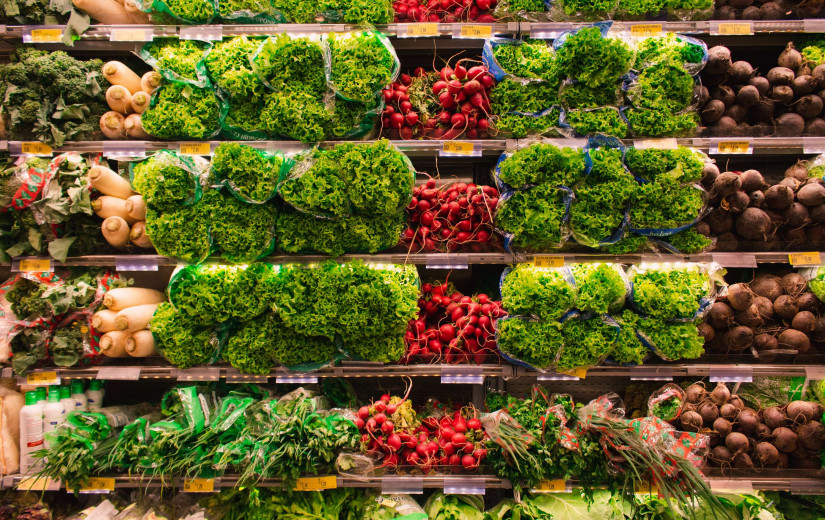From Hunger to Hope: Revolutionizing Food Stamps for a Nourished Nation
In a world where the abundance of food coexists with the despair of hunger, an innovative approach is paving the way for change. Food stamps, a cornerstone of support for vulnerable individuals and families, have undergone a remarkable transformation in recent times. As the nation grapples with the challenges of food insecurity, policymakers and organizations are rallying together to reshape food stamp programs, ensuring that no one is left behind. Join us on this captivating journey as we explore the broader landscape of food stamp support programs and related issues, bringing you a glimmer of hope in a world that hungers for change.
The Growing Crisis of Food Insecurity
Food insecurity, a haunting specter that casts a shadow over countless lives, remains a pressing concern in our nation. The juxtaposition of abundant food resources and empty stomachs may seem unfathomable, yet it is an unfortunate reality for millions of Americans.
Recent events, such as the COVID-19 pandemic, natural disasters, and economic upheavals, have further exacerbated this crisis, pushing the limits of existing food assistance programs. The pandemic, in particular, has led to widespread job losses and economic downturn, plunging vulnerable populations into deeper levels of food insecurity. Families that were once self-sufficient found themselves relying on food stamps and other forms of assistance to put meals on the table.
Moreover, natural disasters such as hurricanes, floods, and wildfires have wreaked havoc on communities across the nation. These catastrophic events not only devastate homes and infrastructure but also disrupt the food supply chain, leaving already vulnerable populations without access to nutritious meals. The road to recovery from such disasters is often long and arduous, requiring a multi-faceted approach to ensure that food security is restored and sustained.
As the nation confronts the challenges of food insecurity, policymakers, non-profit organizations, and dedicated individuals are mobilizing to address this crisis head-on. Their collective efforts aim to reshape food assistance programs, bridge gaps in access and availability, and provide holistic support to those in need. By acknowledging the magnitude of the problem and working together, we can strive towards a future where food insecurity becomes an anomaly rather than a norm.
A Paradigm Shift in Food Stamps Support
Recognizing the urgency of the situation, federal and state governments, alongside dedicated organizations, have embarked on a transformative journey to revolutionize food stamps support programs. Traditional approaches have given way to innovative strategies that focus not only on immediate relief but also on long-term solutions to break the cycle of food insecurity.
1. Enhancing Access and Convenience
One of the key initiatives has been to enhance access to food stamps programs and streamline the application process. In an era dominated by digital advancements, online platforms and mobile applications have become crucial tools in simplifying the application procedure. Additionally, efforts have been made to integrate food stamp programs with other forms of assistance, creating a more comprehensive safety net for those in need.
2. Promoting Nutritional Education
Beyond mere sustenance, the focus has shifted towards promoting healthy eating habits and nutrition education. Food stamps support programs now include initiatives that empower beneficiaries to make informed choices about their dietary intake. Cooking classes, nutrition workshops, and collaborations with local farmers' markets aim to bridge the gap between affordable, nutritious options and those who need them most.
3. Community Collaboration and Partnerships
A fundamental shift in perspective has occurred as communities and local organizations play an increasingly vital role in food stamp support programs. By forging partnerships with grocery stores, food banks, and non-profit organizations, the impact of assistance programs is multiplied. These collaborations not only provide access to a wider array of food options but also foster a sense of community support and resilience.
4. Tech Innovations and Data-Driven Solutions
Recent developments have facilitated more efficient distribution and allocation of resources by harnessing the power of technology and data analytics. Advanced algorithms and machine learning algorithms help identify patterns of need and allocate funds accordingly. Real-time data analysis ensures that assistance reaches those who require it most, optimizing the impact of food stamp programs nationwide.
A Path to a Nourished Nation
The progress made in revitalizing food stamps support programs is a testament to the power of collective action. However, challenges remain, and the road ahead is paved with obstacles waiting to be overcome. Advocacy for policy reforms, increased funding, and raising awareness are crucial components in ensuring the sustainability and effectiveness of these programs. By empowering individuals and communities, we can pave the path to a nourished nation where no one goes to bed hungry.
Food stamps support programs have evolved from being a mere stopgap solution to becoming catalysts for long-term change. The recent initiatives undertaken on a national level have revolutionized the landscape of food assistance, bolstering accessibility, nutrition education, and community collaboration. Though the journey is far from over, the strides made in recent years are a beacon of hope in the fight against food insecurity.
As we move forward, let us continue to advocate for an equitable society where every individual has the opportunity to savor the flavors of life and thrive on the nourishment they deserve. Together, we can transform the narrative of hunger into one of abundance and hope.

















